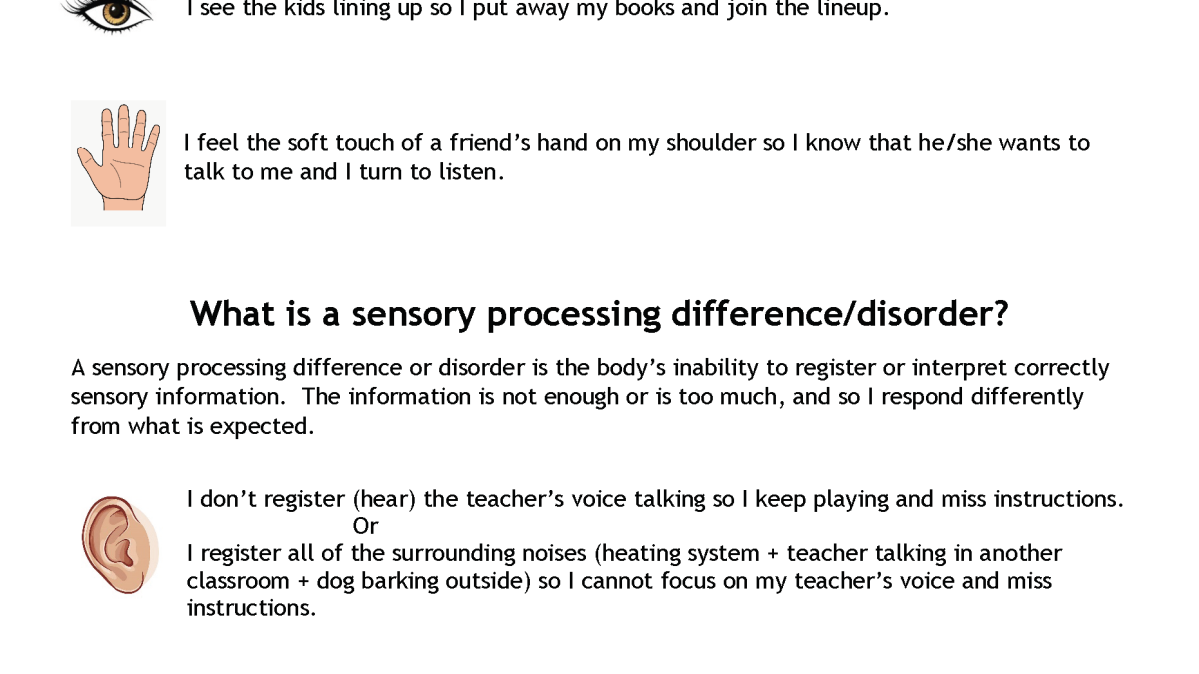A sensory processing difference (which we all have to varying extent) becomes a sensory processing disorder when it affects a person’s everyday life within a variety of activities (self-care, productivity, leisure) and across environments. Challenges with sensory processing can lead to problems with attention, learning, behaviour and mood (such as anxiety, anger, aggression and frustration).
Sensory Processing Disorder affects:
- 5-16% of elementary school-aged children (Ahn, Miller et al., 2004; Ben Sasoon et al., 2009)
- 40-60% of children with attention deficit hyperactivity disorder (ADHD)
- 70-90% of children with autism spectrum disorders (ASD) and the DSM-5 includes over and under sensitivity to sensation as possible diagnostic criteria for ASD.
- Between 58% to 75% of those with SPD do not have other disorders (Carter al., 2011; Van Hulle et al., 2012)
For more information on sensory processing disorder, please visit:
Image

Classroom Strategies and Tools
Whole Class Suggestions
Creating a sensory informed classroom (UDL)
Search by challenging behaviour
Search by Classroom Activity
Document

